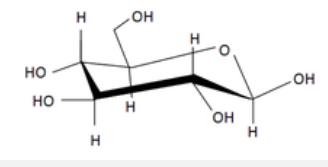Carbohydrate that on attempt hydrolysis are not cleaved to smaller carbohydrates are called :
Monosaccharide
Oligosaccharide
Polysaccharide
Disaccharide
The correct Answer is:A
Step-by-Step Solution:
1. Understanding Carbohydrates: Carbohydrates are organic compounds made up of carbon, hydrogen, and oxygen. They are classified into three main categories: monosaccharides, oligosaccharides, and polysaccharides.
2. Definition of Monosaccharides: Monosaccharides are the simplest form of carbohydrates. They cannot be hydrolyzed into smaller carbohydrates. Examples include glucose, fructose, and galactose.
3. Oligosaccharides: These are carbohydrates that consist of 2 to 10 monosaccharide units. They can be hydrolyzed into smaller carbohydrates. For example, sucrose (a disaccharide) can be hydrolyzed into glucose and fructose.
4. Polysaccharides: These are complex carbohydrates made up of many monosaccharide units (more than 10). They can also be hydrolyzed into monosaccharides. Examples include starch and glycogen.
5. Conclusion: Since the question asks for carbohydrates that cannot be cleaved into smaller carbohydrates upon hydrolysis, the answer is monosaccharides.
Final Answer: Monosaccharides are carbohydrates that on attempted hydrolysis are not cleaved to smaller carbohydrates.
---
Similar Questions
Knowledge Check
Amino acid that does not contain chiral centre is :
AAlanineBLeucineCValineDGlycineCarbohydrates are compounds of
AC,N,OBC, H,NCC,H,ODN, O, HCell membrane carbohydrates participate in :
Acell adhesionsBcell-to-cell recognitionCtransporting substances across the membraneDhydrophilic attractions

